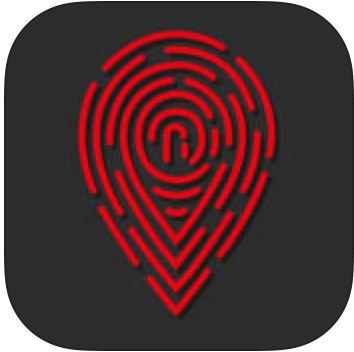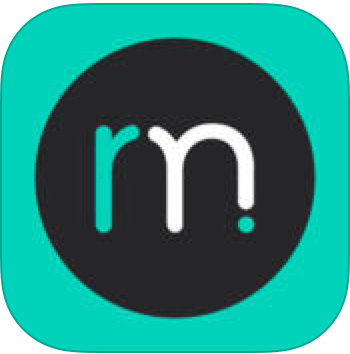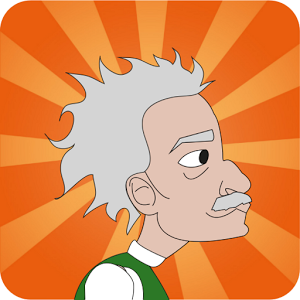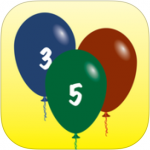Im Rahmen unserer Vorlesung „Mobile Applications 2016“ wurde diese nette kleine Spiel entwickelt – ich liebe den „Feel“-Modus und die Beschreibung ist so kurz wie die Dauer des Spiel 🙂 :
A fun, addicting game for everyone.

Digitale Lehre an und rund um der Technischen Universität Graz
Alles in Zusammenhang mit Mobilität
Im Rahmen unserer Vorlesung „Mobile Applications 2016“ wurde diese nette kleine Spiel entwickelt – ich liebe den „Feel“-Modus und die Beschreibung ist so kurz wie die Dauer des Spiel 🙂 :
A fun, addicting game for everyone.
Im Rahmen der Seamless Learning Tagung in Graz haben wir einen Beitrag rund um unsere Forschungsarbeiten mit Smart Watches und Audience-Response-Systemen verfasst.
Zusammenfassung:
Audience-Response-Systeme ermöglichen dem Auditorium, während eines Vortrages aktiv zu werden. Die vortragendene Person gewinnt damit wertvolle Informationen aus dem Publikum. Mobile, internetfähige Geräte lassen sich in webbasierte Systeme integrieren und zur Benutzereingabe nutzen. Um dieses Feedback den Vortragenden leichter zugänglich zu machen, können die Potentiale der Smartwatch als ein direkt am Körper anliegendes Gerät genutzt werden. Sie schränken die Vortragenden nicht in ihrer Mobilität ein und fördern durch Vibrationssignale und visuelle Signale eine schnellere Reaktion. Vor allem die Integration der Smartwatch in ein Live-Backchannel-System kann den Nutzen des Systemes enorm steigern.
Zitation: Urwalek, H., Ebner, M. (2016) Potentiale von Smartwatches für Audience-Response-Systeme. Zeitschrift für Hochschulentwicklung, 11/4. S. 39-50
Our publication about „Mobile Phones and Learning Perceptions of Austrian Students, aged 11 to 14 Years“ at this year ED-Media conference is now online available. The presentation slides have been published right here.
Abstract:
This article aims to report on the findings of a study of perception for using mobile phones for learning in Austria. Surveys were conducted to examine the ownership and usage of mobile phones of eight to 14 year old pupils. Findings indicate that gathered data show a lack of perceptions for benefits of mobile phones for learning. Issues based on the research in 2013 and 2014 are discussed with regard to demands and challenges for education. Using their own mobile phones for various learning activities could build a bridge between students‘ practice in everyday life and school learning, and developing indispensable 21 st century skills.
[Full publication @ ResearchGate]
Reference: Grimus, M. & Ebner, M. (2016). Mobile Phones and Learning – Perceptions of Austrian Students aged from 11 to 14 Years. In Proceedings of EdMedia: World Conference on Educational Media and Technology 2016 (pp. 106-115). Association for the Advancement of Computing in Education (AACE).
Im Rahmen der heute stattfindenden iUNIG-Tagung zu Seamless Learning darf ich über unsere Forschungsergebnisse zum Einsatz einer Smartwatch in Kombination mit einem Audience-Response-System berichten. Hier gibt es einmal die Vortragsfolien dazu:
Klicken Sie auf den unteren Button, um den Inhalt von www.slideshare.net zu laden.
Our publication about „Use Cases and Architecture of an Information system to integrate smart glasses in educational environments“ at this year ED-Media conference is now online available. The presentation slides have been published right here.
Abstract:
Wearable devices, such as smart glasses, are nowadays easily available on the market; therefore, these devices could be used to evaluate more and more use cases in educational domain. After a short introduction to smart glasses functionality, features and user interaction techniques, several use cases are defined and described. To integrate smart glasses into the educational domain, specialized information systems and infrastructure is necessary. A basic concept of a suitable information system is defined and explained by a sample use case. The main advantage of using smart glasses in educational domain is that users can interact with the device hands-free therefore (fine motor skills) tasks can be performed while receiving visual and vocal support simultaneously. Additionally the teacher/observer can evaluate the performance remotely. Wearable devices become better available and cheaper, but should only be used in suitable use cases where the learning experience could be improved.
[Full publication @ ResearchGate]
Reference: Spitzer, M. & Ebner, M. (2016). Use Cases and Architecture of an Information system to integrate smart glasses in educational environments. In Proceedings of EdMedia: World Conference on Educational Media and Technology 2016 (pp. 51-58). Association for the Advancement of Computing in Education (AACE)..
 Im Rahmen unserer Vorlesung „Mobile Applications 2016“ wurde eine App entwickelt die die Möglichkeit bietet Clubs in Graz zu besuchen und dies auch anzuzeigen:
Im Rahmen unserer Vorlesung „Mobile Applications 2016“ wurde eine App entwickelt die die Möglichkeit bietet Clubs in Graz zu besuchen und dies auch anzuzeigen:
App description: With our mobile application users can see clubs and their population in their near field area. Users can see the total population of a club, friends who are visiting this club and the proportion of single-girls and single-boys in there in form of a number, in percentage and a diagramm. There is a ‚Let’s go Out‘ button. By hitting this button, the user tells the system that he/she is out right now. When he/she is in a range of 30m to a club, he/she gets signed in and his/her friends will see it. This will be possible only during the clubs opening hours. When the user opens the app and is no longer in range of the club he has signed into, he/she gets automatically signed out. He/she get’s also signed out, when the club closes. The Friends-UI contains out of a list of the users friends. He/she can also see who of his/her friends is currently out. We want keep the possibility of adding friends simple, so this can be done by reading another users QR code.
 Im Rahmen unserer Vorlesung „Mobile Applications 2016“ wurde eine App entwickelt die die Möglichkeiten für einen Fitbit Tracker erweitern:
Im Rahmen unserer Vorlesung „Mobile Applications 2016“ wurde eine App entwickelt die die Möglichkeiten für einen Fitbit Tracker erweitern:
Remindme is you new alarm manager for all of your Fitbit tracker!
All you need is a Fitbit account with a supported device connected.PS: it’s not in the name, but we also sync your fitness data to the Health App.
 Es freut uns ankündigen zu können, dass wir nun auch einen 1×1 Trainer für den iPad anbieten können. Mit Hilfe eines kleinen Pandas dürfen die Rechnungen eingegeben werden. Zusätzlich ist es so, dass wenn man einen Account in unserem Learninglab besitzt, wird alles mitgespeichert und damit die Rechnungen abgestimmt auf den Lernstand.
Es freut uns ankündigen zu können, dass wir nun auch einen 1×1 Trainer für den iPad anbieten können. Mit Hilfe eines kleinen Pandas dürfen die Rechnungen eingegeben werden. Zusätzlich ist es so, dass wenn man einen Account in unserem Learninglab besitzt, wird alles mitgespeichert und damit die Rechnungen abgestimmt auf den Lernstand.
This App is supposed to help children with learning multiplication tables up to ten.
It is possible to create an account for tracking your success. If a registered user is playing, problematical calculations are tested more often.
There are three difficulty levels and two different modes. In one of the modes the correct result has to be entered by numerical buttons and in the other one the result has to be chosen from seven numbers.
The friendly assistent Paul the panda is commenting your learning sessions.
Have fun!
 Nun gibt es unser Spiel MathEvo auch für iOS, für Android wurde es bereits hier angekündigt. Viel Spaß mit dem Donkey Kong Revieval 🙂 .
Nun gibt es unser Spiel MathEvo auch für iOS, für Android wurde es bereits hier angekündigt. Viel Spaß mit dem Donkey Kong Revieval 🙂 .
MathEvo is an educational game for children.
The goal is to solve simple math problems, for which you get rewarded with stars. With these stars you are able to unlock new backgrounds and character models.
The gameplay is based on the old Donkey Kong game, where you have to climb ladders to reach the goal.
Each climed ladder adds another piece to the equation showing in the top right corner. If the equation is wrong, the right path will be displayed.
All levels are randomly generated.
 Im Rahmen einer Projektarbeit ist wieder einmal eine Mathematik App für das iPhone entstanden. Man soll Aufgaben lösen und die richtige Lösung bei den aufsteigenden Ballons erraten. Um den Spielspaß zu erhöhen kann man das auch gegeneinander spielen bzw. hindern noch ein paar gemeine versteckte Features auf dem Weg zum Sieg:
Im Rahmen einer Projektarbeit ist wieder einmal eine Mathematik App für das iPhone entstanden. Man soll Aufgaben lösen und die richtige Lösung bei den aufsteigenden Ballons erraten. Um den Spielspaß zu erhöhen kann man das auch gegeneinander spielen bzw. hindern noch ein paar gemeine versteckte Features auf dem Weg zum Sieg:
Diese App ermöglicht Kindern spielerisch Rechenaufgaben zu lösen und somit die vier Grundrechnungsarten zu trainieren. Ein Kind kann alleine oder mit bis zu 3 weiteren Spielern gemeinsam üben.
Aufgrund des einstellbaren Zahlenbereiches ist die App für jedes Alter ab der 1. Volksschulklasse geeignet.
Ziel des Spieles ist möglichst viele Rechenaufgaben durch Zerplatzen der richtigen Luftballons zu lösen.
Ein paar besondere Nebeneffekte machen das Spiel zusätzlich interessant.